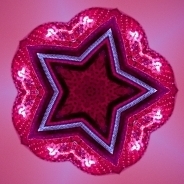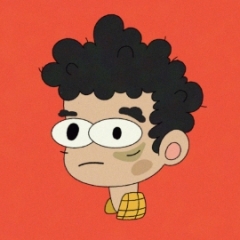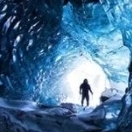Leaderboard
-
in all areas
- All areas
- Videos
- Video Comments
- Files
- File Comments
- File Reviews
- Pipelines Tools
- Pipeline Tool Comments
- Pipeline Tool Reviews
- Databases
- Database Comments
- Database Reviews
- Plugins
- Plugin Comments
- Plugin Reviews
- Images
- Image Comments
- Image Reviews
- Albums
- Album Comments
- Album Reviews
- Topics
- Posts
- Blog Entries
- Blog Comments
- Status Updates
- Status Replies
-
Custom Date
-
All time
May 3 2016 - April 27 2024
-
Year
April 27 2023 - April 27 2024
-
Month
March 27 2024 - April 27 2024
-
Week
April 20 2024 - April 27 2024
-
Today
April 27 2024
-
Custom Date
03/29/2022 - 03/29/2022
-
All time
Popular Content
Showing content with the highest reputation on 03/29/2022 in all areas
-
In broad terms, Omniverse is a suite of freemium applications (free for personal use, payed for companies as an Enterprise version). There are applications for developing your own apps and games based on OV technology, apps for viewing archviz scenes and apps for building scenes. There's a launcher from where you can install what you need. Omniverse has its own custom realtime RTX raytracer and a fast path tracer as well as its own physics system for rigid and soft bodies. These are more or less the key features you'd use when you want to use OV for building and rendering scenes. Omniverse requires a Nvidia RTX GPU to run. All apps are based completely on USD. Omniverse apps do not accept anything BUT USD. In the background, the apps use a database core called Nucleus. This is essentially a localhost server that you can setup only for your machine or you can setup a true server to share with team mates online. There's also an app called OV drive for quickly creating a virtual harddrive in Windows Explorer that is linked to the Nucleus core. Software companies can develop connectors (= plugins / live connections) for OV. With these plugins, you then export your entire scene or single assets from the scene as USD files to the Nucleus core, e.g. by exporting them to the virtual Omniverse drive. Then you import the USD assets from the Nucleus core folder structure to your OV scene. Once exported, you can continue editing the scene in your DCC application and with every change you make, be it a modelling change, lighting, materials, adding new objects (...you name it), a re-export of the scene as USD (thus overwriting the existing USD asset) to Nucleus is triggered in the background. The nucleus core keeps track of only the differences since the last export and streams them to the OV scene, causing the assets to update in near real-time in OV. So if you are using a nucleus server that is online, one team member working from home can edit an object in Maya, another team member somewhere else does something in C4D and another person textures something in Substance Painter. With the connectors from these apps, all team members can see what the others are doing live on their own screen through the scene in OV. Because OV is based on USD, it is compatible with Pixar's USD Hydra delegate (essentially a bridge for render engines): Any render engine that supports Hydra can be plugged into OV and used for rendering the scene instead of OV's default path tracer. The main idea behind OV is thus collaboration across multiple apps in real-time where OV can serve as both a bridge and an endpoint for rendering the final scene. Because everything is a baked, exported asset, there are no incompatibilities between apps. USD supports MaterialX, so I suppose we'll see more MaterialX support across render engines in the future in addition to each engine's custom materials. Now read the initial post again and it should make more sense 🙂 Edit: German press release from Maxon if you want to know more about C4D / Redshift and OV: Team-basierte Zusammenarbeit für Maxon-Produkte jetzt mit NVIDIA…8 points
-
Vanilla Cycles still doesn't offer lightgroups or light linking. This $49 version of Cycles called K-Cycles now allows for these, simplifying the lighting workflow considerably. What is K-Cycles Ultra Lighting Interactive real-time viewport and final lighting workflow. Ultimate Lightgroups features with ease of use. Solo preview lightgroup mode. Remainder lightgroup mode. Complete accurate lighting setup. Real-time light mixing for viewport and final render Light linking in real-time with many options. Tone mapping per lightgroup. Full and fast denoising for all the lightgroups. https://blendermarket.com/products/k-cycles https://kcycles.gumroad.com/l/ByeMh E-Cycles also supports lightgroups and light linking, but is far too expensive in my opinion. Until Cycles introduces these, this is sort-of essential for anyone doing complex lighting setups such as in architectural rendering.2 points
-
VIDIA Omniverse Ecosystem Expands 10x, Amid New Features and Services for Developers, Enterprises and Creators NVIDIA Omniverse Enterprise is helping leading companies enhance their pipelines and creative workflows. New Omniverse Enterprise customers include Amazon, DB Netze, DNEG, Kroger, Lowe’s and PepsiCo, which are all using the platform to build physically accurate digital twins or develop realistic immersive experiences for customers. Enhancing Content Creation With New Connections and Libraries The Omniverse ecosystem is expanding beyond design and content creation. In one year, Omniverse connections, ways to connect or integrate with the Omniverse platform, have grown 10x — with 82 connections through the extended Omniverse ecosystem. New Third-Party Connections for Adobe Substance 3D Material Extension and Painter Connector, Epic Games Unreal Engine Connector and Maxon Cinema 4D will enable live-sync workflows between third-party apps and Omniverse. New CAD Importers: These convert 26 common CAD formats to Universal Scene Description (USD) to better enable manufacturing and product design workflows within Omniverse. New Asset Library Integrations: TurboSquid by Shutterstock, Sketchfab and Reallusion ActorCore assets are now directly available within Omniverse Apps asset browsers so users can simply search, drag and drop from close to 1 million Omniverse-ready 3D assets. New Omniverse-ready 3D assets, materials, textures, avatars and animations are also now available from A23D. New Hydra Render Delegate Support: Users can integrate and toggle between their favorite Hydra delegate-supported renderers and the Omniverse RTX Renderer directly within Omniverse Apps. Now available in beta for Chaos V-Ray, Maxon Redshift and OTOY Octane, with Blender Cycles, Autodesk Arnold coming soon. There are also new connections to industrial automation and digital twin software developers. Bentley Systems, the infrastructure engineering software company, announced the availability of LumenRT for NVIDIA Omniverse, powered by Bentley iTwin. It brings engineering-grade, industrial-scale real-time physically accurate visualization to nearly 39,000 Bentley System customers worldwide. Ipolog, a developer of factory, logistics and planning software, released three new connections to the platform. This, coupled with the growing Isaac Sim robotics ecosystem, allows customers such as BMW Group to better develop holistic digital twins. New Omniverse connections Adobe Substance 3D Material Extension: Import Substance 3D asset files into any Omniverse App. Adobe Substance 3D Painter Connector: Apply textures, materials, and masks or UV mapping onto 3D assets with Adobe Substance 3D Painter, releasing March 28. Unreal Engine 5: Send and sync model data and export Nanite Geometry to Omniverse Nucleus. e-on VUE: Create beautiful CG environments including skies, terrains, roads, and rocks. e-on PlantCatalog: Export a plant, enable live-sync, and edit in real time. e-on PlantFactory: Create ultra-realistic, high polygon plants. Maxon Cinema 4D: USD is now supported. Use the app in a connected workflow with OmniDrive. Ipolog: Perform material provisioning and production logistics for manufacturing planners. LumenRT for NVIDIA Omniverse, powered by Bentley iTwin: Allows engineering-grade, millimeter-accurate digital content to be visualized on multiple devices and form factors. Omniverse Enterprise Features and Availability Broadens New updates are coming soon to Omniverse Enterprise, including the latest releases of Omniverse Kit 103, Omniverse Create and View 2022.1, Omniverse Farm, and DeepSearch. Omniverse Enterprise on NVIDIA LaunchPad is now available across nine global regions. NVIDIA LaunchPad gives design practitioners and project reviewers instant, free turnkey access to hands-on Omniverse Enterprise labs, helping them make quicker, more confident software and infrastructure decisions. Latest Omniverse Technologies and Features Major new releases and capabilities announced for Omniverse include: New Developer Tools: Omniverse Code, an app that serves as an integrated development environment for developers and powers users to easily build their own Omniverse extensions, apps or microservices. DeepSearch: a new AI-based search service that lets users quickly search through massive, untagged 3D asset libraries using natural language or images. DeepSearch is available for Omniverse Enterprise customers in early access. Omniverse Replicator: a framework for generating physically accurate 3D synthetic data to accelerate training and accuracy of perception networks — now available within Omniverse Code so developers can build their own domain-specific synthetic data engines. OmniGraph, ActionGraph and AnimGraph: major new releases controlling behavior and animation. Omniverse Avatar: a platform that uses AI and simulation technology to enable developers to build custom, intelligent, realistic avatars. Omniverse XR app: a VR-optimized configuration of Omniverse View that enables users to experience their full-fidelity 3D scenes with full RTX ray tracing, at 1:1 scale, coming soon. New versions of Omniverse Kit, Create, View and Machinima.2 points
-
Completly agree with everything. It really needs some sort of cache. Also the line display vs geometry wasn't much of performance booster. But for a first release i think its a nice plugin from insydium2 points
-
Nvidia has released Canvas 1.2, adding support for style variations. Users can choose from 10 variants of each readymade visual style, making it possible to adjust the look of an image while preserving the overall theme. Style images and variations are also now saved in project files. Based on Nvidia’s GauGAN 2 web app, Canvas is GPU-accelerated via the Tensor machine learning cores in Nvidia GPUs, and requires a RTX card. However, if you’re using an older GPU – or an AMD, Intel or Apple processor – you can still try the underlying technology online, via Nvidia’s GauGAN 2 web app. It isn’t as slickly presented, but it covers a wider range of landscape types, including buildings and other man-made structures, and also supports natural text input. System requirements Canvas is available in beta for Windows 10. You need a Nvidia GeForce RTX, Titan RTX, Quadro RTX or RTX GPU with version 471.68+ of the Nvidia GeForce, Studio or Quadro driver to use it. It’s a free download.1 point
-
@Daniel SeebacherThanks a lot, that is a premium explanation post! 👍1 point
-
I spent a little time with Taiao this morning. My very preliminary finding: Good: It's easy to use, quite self-explanatory Presets for trees and plants included Forces (like wind) apply to whole tree/plant Quick results Not so good: Lots of fiddling needed to get from quick result to good result No PBR-materials included Wind on a tree? -> Welcome to 1 fps-country. Forces can't be cached My personal summary: Wind & Forces where the main appeal to me. Otherwise I could just use canned assets with much higher quality and much less time to setup. Performance is typical of Insydium's tools, though. Ok in the beginning, but it quickly becomes really painful. I don't think I'm going to use it anytime soon...1 point
-
On the eco footprint, that is all about to 99.999% vanish. The switch from proof of work (mining with a million gpus) to proof of stake will eliminate 99% of the energy usage and will make gpu prices plummet. On top of that the level 2 system will allow thousands of times as many transactions to be performed before being bundled up into a single ETH transaction. so yeah its horrific right now, but by the end of the year we'll need a few less power stations around the world. As for NFTs. I 100% agree on what you showed, NFT's in their current state are almost entirely garbage, most often used to launder money or milk cash from idiots. However. NFTs do have and will soon have their main intended use flung into the limelight. Proof of ownership of other items. Currently all you see them used for is "hey, I own this url which points to a crap image that took somebody 30 seconds to make" Very soon you'll find your Rolex watch comes with an NFT so you can prove to future buyers that yours isnt a knockoff. The same will go for any high end designer item where counterfeits are a problem. The whole NFT in gaming thing, that one is yet to play out. The idea that items you buy in game will genuinely be yours to keep, to trade, sure why not. Its effectively bringing the whole Magic the Gathering card system to virtual items. Currently mobile gaming is funded 90% by whales who drop obscene amounts of money on in-game items, either to help them win, or to give them a rare cosmetic look. I suspect a lot of this will be aimed at them, but it could also work out in everyone's favor. Joe Bloggs finds the super stylish and rare tie-dye beanie hat in the new GTA6 game? some idiot with too much money wants it and will pay £10k for it? Sure, why not. 80% cut to the guy that sells it, 20% cut to the game publisher and the rich idiot gets his pretend item.1 point
-
Oh man thank you so much! That was seriously driving me crazy. Surprised more people don't come across that as an issue because I couldn't find a similar post about it online. Anyways, thanks for the help. Cheers!1 point
-
1 point
-
If you are ok with Maya update, I don't think you should complain about C4D update.1 point
-
Seems like whenever i post a question in here, I find the solution myself not so long after 😛 File attached if anyone is interested. Video file also 2022-03-28 22-13-12.mkv xP - Fake xpInfectio Triggerred with xParticles.rar In the xpScale - `Parameter to Change` should be set to SCALE, and in the mapping section Parameter=Scale Value map to Age (the longer the age the slower and smoother the growth What controls the distribution of new particles is the Weight map loaded in the Emitter>Object>EmitterShape set to Object>Weight map is loaded in the Selection field1 point
-
Interesting....a lot of positions. What does "m/f/d" mean? What I found interesting: Positions for developing real time GPU rendering for both C4D and Redshift and for expanding existing modeling tools. What I didn't see: Anything related to character animation positions. What is a sign of the times: Data analytics positions. Telemetry is going on each time you open up the program. How you use there software is being recorded and sent back to Maxon. Nothing unusual there. If that bothers you, then you can turn that off: Dave1 point
-
Arte who lives in Poland, likely has a keen grasp on this. And this rings true from the little I know here in the U.S. Individual western companies might quite possibly need to "fall in line" with governmental policies. Maxon might just be going with that. I won't critique the Western sanctions here as we are discouraged from discussing politics, and I also appreciate the whole situation is complex. Will say this: war and all that comes with it always brutalizes the everyday man, not those in power. I feel for all those caught in the crossfire, whether that is literal crossfire or trying to live with some degree of normality.1 point
-
No, that's exactly the same as the top was... just apply those techniques to the bottom as well. If you really do need step by step the whole way through, then perhaps book an hour of my time to go through it with you over skype or similar - that is a service I offer... CBR1 point
-
I already expressed my great enthusiasm for the next release (based on Mat's insight here). Nonetheless, I hope for some specifics 😄 Best Redshift Integration of all DCCs It's the same roof, so C4D should have a premium RS integretion. Materials in the viewport. New node system with all functionality. Material previews rendering with IPR. OCIO-aware Picture Manager. A one-click "Render beauty + AOVs and export everything to After Effects and rebuild there automatically". Add RS Materials to the Content-Library-Assets. Make RS the standard renderer. Remove the UI deadspace in the IPR. Interactive help like in C4D. Redshift RT is still very early und very unstable, but it should become C4D's viewport, some day. Stability This is aimed at C4D, Redshift and mainly nVidia. A "wrong" nVdidia-Driver-Version can cause troubles without end. How to know the best driver for your config? Forum exchange, try and error. Luckily, there are some really stable driver+software-combinations everytime I had to jump these hoops, but the journey is *SO* painful. Bugs This was the only new feature of R25 😄 Come on now, really Maxon, up your QA-game! Also, there should be *much* longer bugfixing-support for owners of a perpetual license. Release cycle Honestly, I'd rather have only 1 big update per year. Less hassle updating stuff, finding working drivers etc. Maybe more time for QA on your side? So far, I can't see any benefit of the biannual release cycle, only that it apparantly forced you to do the fubar R25-release, needlessly so. Performance This is a broad field. I don't want to dive into details here, I want to express a broad wish. Currently, we are confined to rather small/medium scenes. 2 Characters, a landscape tile, some decoration and boom, you're already operating at the edge of C4D's performance envelope. Very quickly, work becomes about managing ressources, not making artistic decisions. And trying to hide the seams of the performance envelope all the time 😕 I wish we had some kind of streaming engine for geo. A unified simulation system. A unified cache system. A clear feedback system, that shows me what is computationally expensive and what isn't. I don't know, if the "core rewrite" adresses any of that, I just want to feel some realtime-magic in C4D. zBrush It has by far the best scultping "feel" of any app I tried. It's a mindblowingly good app, as demonstrated again and again by zBrush-artists. But, for the love of all UX/UI saints, zBrush sorely needs a complete UX/UI overhaul. That's one of Maxons strengths. zBrush-Artists defend the current UI, but Im quite sure that is a form of Stockholm syndrome. Maybe offer an "Easy Mode" alternative, here. A very strong "GoZ"-implementation is also obligatory here. My last point is not software related, but regarding communication. Once, an attempt has been made by Maxon towards more transparency. Anyone remember the three-and-a-half blog posts? 😄 Ok, now do that again, but thoroughly. Just do it like the Redshift team. Have a nice, active forum with Premium sections for paying customers. Talk with us about problems. Listen to our wishes, in a way that we know we are heard. Share at least a broad roadmap for the next releases. This is by far the biggest problem with Maxon and C4D. You guys are almost completely opaque, and that's a severely outdated mindset for a company that relies on the thriving and the goodwill of a community of communicators. And communicators we are, visual, textual, social. Talk to us, please! 🙂1 point
-
Hello How to create a burning effect in real time in C4D This way you can work while viewing the viewport in real time. In addition, if you render channels separately using mult-pass You can make it look a little nicer in compositing work I hope it helps you with your work1 point
-
I've been working on a teeth shader in Arnold recently for a project, and while I haven't tried to replicate it in Cycles, I would say that the key to realistic teeth is nailing it's translucency, through the sss and/or the refraction channels. The attached image shows a tooth shader being driven completely by sss. (The character is kinda gross, so please try to disregard all the gunk and cracks in the model 🥴)1 point
-
This was deliberately changed in R18 and has been the same ever since - Axis does get moved to average of 2 objects. But I can see why the old way would be useful (and faster), and might petition to get that behaviour restored. However that isn't the way it works now, and I am unaware of any preference setting to change this for Connect Objects + Delete. However, there is another way altogether, via the Connect object. Select the mesh whose axis you want to preserve, hold alt and add the connect, which will make it a parent of that object. Now drag the other object under that (order not important now) select the Connect and hit C to make that editable, which will preserve the axis at the point it was before you did that. Don't forget to untick both Weld Points and Centre Axis in the Connect before you do this. CBR1 point








.thumb.jpg.f3cd5ec0a1803457d0dc9bd21eff8f08.jpg)